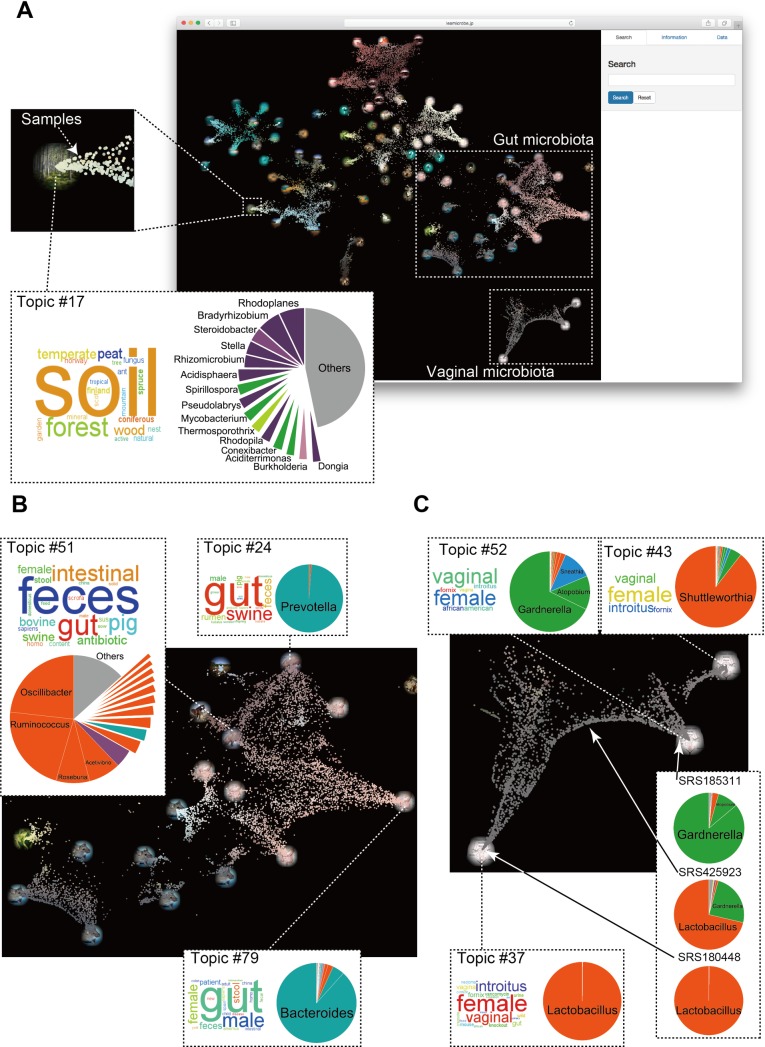Fig 1. The LEA global map.
(A) Scatter plot of the 30,718 samples from various environments. Coordinates were calculated by t-SNE based on the similarity of topic compositions among samples. Each dot represents a sample. Pictures correspond to topics and are mapped to coordinates where the mixing percentage of the topic is 100%. Each topic has its own word subset and microbial sub-community. As an example, for topic #17, a word subset related to “soil” is displayed by the word cloud (the size of each word is scaled by its probability of occurrence), and the microbial sub-community, which contains mainly soil bacteria, is displayed as a pie chart. (B) Enlarged view of the region related to the gut in the global map. (C) Enlarged view of the region related to the vagina in the global map. The colors of the genera in the pie charts are determined based on their related phyla (see S2 and S3 Figs, which shows the word clouds and pie charts for all topics).

